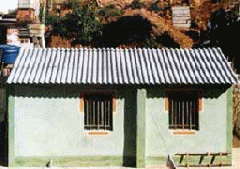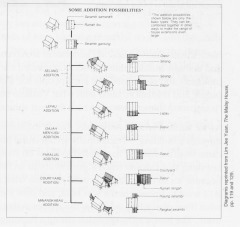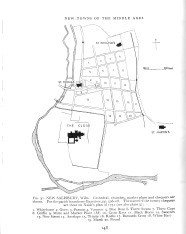In a previous post I looked briefly at the idea of ‘Affordable Housing’ and some of the problems I saw with current policies to secure its provision. I now want to look at how low cost housing is provided in the developing world, in places like Latin America, Africa and India, where despite the obvious problems I think there are some valuable lessons to be learned for us here in the UK.
Back in the late 1960s I came across a book by Charles Abrams, who was at the time I think a UN advisor on housing matters. In that book, Man’s Struggle for Shelter in An Urbanizing World, Abrams describes how people living in the shanty towns of Latin America or Africa create housing for themselves. These areas are known by a variety of names – ‘barrio or ‘favela’ in Latin America for example.
The first step was to acquire a piece of land, not necessarily legally. On that land a very simple single room dwelling would be erected, using whatever material could be acquired. As money becomes available the dwelling is extended and upgraded. Plastic and cardboard is replaced by concrete blocks. More floor space is added. A first floor is constructed. Gradually the building consolidates itself on the plot.
Because so often the occupation of the site was illegal, this dwelling would however have no water supply, no sanitation or power. Conditions in the neighbourhood would be squalid and unhealthy. Because the site has been grabbed from whatever is available access for vehicles may well be impossible. There is little incentive to improve the house in these circumstances.
The typical state response to this is clearance. There are many disadvantages to this of course. The redevelopment schemes are expensive and can only house a fraction of the people living in these illegal settlements. As those who are rehoused are moved out, their places are taken by new immigrants and the problem persists. Frequently those moved out are unhappy too. They may be miles away from their place of work and either lose their job or are forced to make long and complicated journeys. In both cases they are usually worse off financially. It isn’t unknown for the displaced residents to move back to their old neighbourhood. (Although not something I’m going to pursue here, these were of course similar to the problems experienced by residents in the so-called slum clearance areas here in the UK in the ’50s and ’60s.)
See more here, in this leaflet for school geography classes:
Abrams proposed an alternative that he believed would be cheaper and better meet the needs of the impoverished families involved. He wanted to harness the energy and commitment of the residents of the ‘favela’, already demonstrated in their willingness to move from impoverished rural locations to live in squalor in exchange for the chance to improve their lot.
He suggested a formalisation of the process already going on, by setting out a grid of serviced roads and plots, each with water, sanitation and power connections available. On these plots could be erected a simple one room dwelling as before. This could be done by the occupier or by the state. He called this ‘core housing’. Although the space available would be as restricted as before, because minimal infrastructure was in place, the living conditions would be significantly improved.
As before, as money became available, residents would be able to enlarge and extend the house to meet their specific needs. Rather than being displaced to an inflexible high rise block where they lost all control over their surroundings, they would remain in control of their lives. They could grow food to support themselves or for sale or exchange with neighbours. They would have a secure tenure and could pass the property on to younger generations.
This isn’t a new process of course. It is what happened with the homesteaders of 19th Century America, it happened in the whaling settlements of Nantucket and it happens traditionally in Malaya. (Images from ‘How Buildings Learn ’ by Stuart Brand)
Closer to home it is what happened in planned mediaeval settlements here in the UK and in English controlled France. There is a good list in the book ‘New Towns of the Middle Ages’ by Maurice Beresford, originally published in 1967. That list includes Devizes and from around the same time places as varied as Hungerford, Thirsk, Uxbridge, Boroughbridge, Wokingham and Truro. Another example is the Chequers area of Salisbury. Chequer has the same root as ‘quarter’, in the sense of an area of a town. It also gives us the word chequerboard for reasons that should be clear from the image below (taken from Beresford above).
In these planned towns or plantations, roads would have been set out and plots sold or let subject to covenants covering the broad form of the development to be built. Typically there might be a requirement to build in brick or stone, limit the height to no more than 3-4 stories, to build across the entire frontage and limiting the uses that could be carried out on the plot. Out of these simple rules came the endless variety of the English Market Town.






You might take a look at this essay of mine – I think we’re thinking along similar lines. http://blog.journeyman.cc/2013/07/ultra-low-impact-housing-and-public.html
I have seen that Simon. I think we are indeed thinking similarly, although I’m trying to come up with ways that would work for those who don’t want to be self builders or to push at the boundaries in the same way.
There lies one issue. In the UK I can’t imagine that many people would feel comfortable attempting to develop their own home. Similarly, the idea of hundreds of identical new rabbit hutches being dumped on an area by a developer is equally abhorrent. Surely there must be a way in which federated neighbourhoods or communities could set up their new housing mechanism by utilizing local tradesmen who could build as and when required. Ethically it sounds more appealing as communities would take more accountability for what goes on in the area and sidesteps the large organisation seeking to exploit.